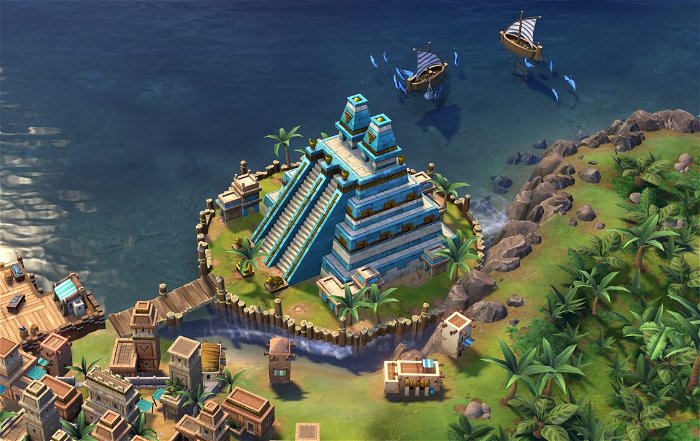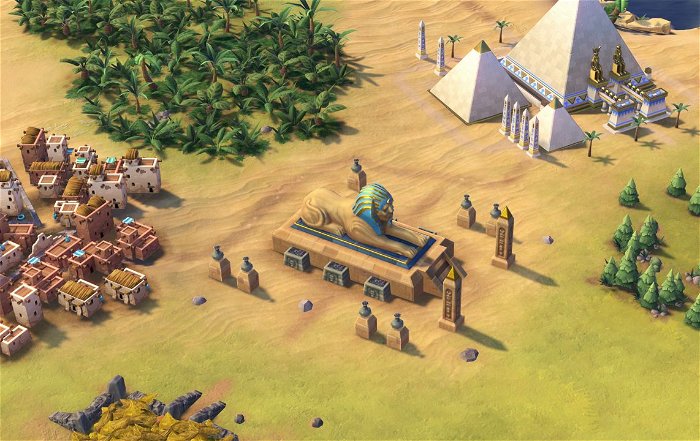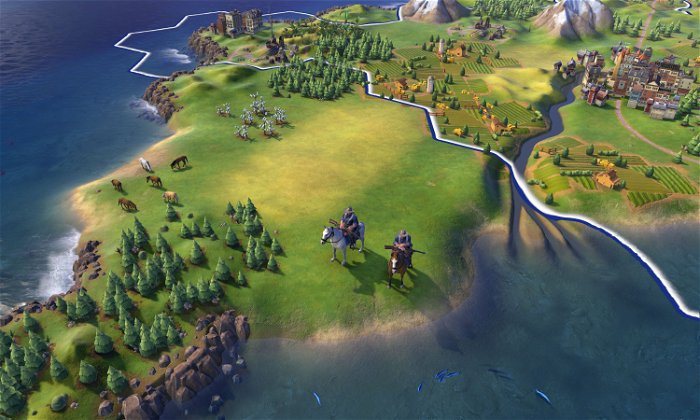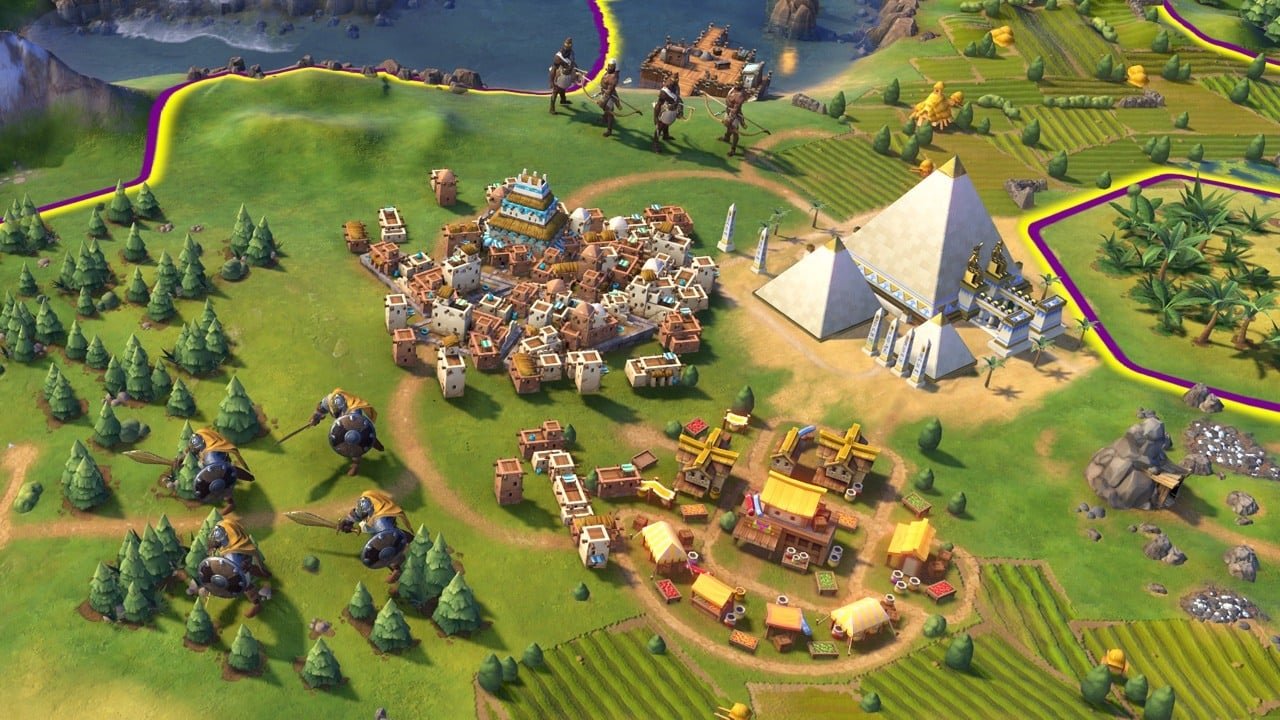It’s not easy to iterate successfully on a game that still regularly sits in the top ten most played games on Steam six years after its release. But that is the exact task that the team at Firaxis has taken on with Civilization 6, and somehow it seems like they have managed to complete it successfully.
Civilization 6 is just weeks away from launch and is shaping up nicely. While the classic Civilization gameplay remains, there is a ton of new additions, from new leaders and civilisations to special tasks that will give certain technologies a research boost, as well as a beautiful new art style. Some changes are small and may not be noticeable until you are hundreds of hours into the game, whereas others alter cornerstones of the Civ formula, but there is one change that swamps all of the others in terms of its importance.

“I think the unstacking of the cities is the biggest change from Civ 5,” says Sarah Darney associate producer on Civilization 6. “The maps are randomly generated, so you don’t know what the tiles are going to be around your city, so it’s much more replayable and it really throws you off. If you have a routine you are used to in Civ 5, you don’t have that any more. You’re really depending on the map, and it’s almost like another character that you are fighting against, or with, depending on your luck. For me, especially, that is the biggest change in Civilization 6.”
Whereas Civilization 5’s big change was unstacking the units, meaning no two military units could occupy the same hex, Civilization 6 takes it one step further by unstacking the cities, with each district taking up its own hex. No longer can you just build everything in a single city as you could before, (providing you had the time and resources, of course) as each district takes up vital space. This makes specialising more important than ever.
Obviously deciding what to specialise in when forming early cities is no easy task, especially for new players, but another new feature in Civilization 6 might just make that decision for you. See, each district has adjacency bonuses, which will give you a significant boost if used correctly. Placing your campus next to mountains, for example, will give you a significant scientific boost compared to placing in the middle of nowhere.
When you consider how many districts and land types there are in Civilization 6, this starts to sound like quite the daunting prospect, especially for anyone new to the series, but Darney is confident that this won’t be another barrier to entry.

“So new players will not be screwed if they don’t use adjacency properly,” says Darney. “Civ is one of those games that has so many levels that you can play it very casually or very hardcore. You are not going to have the most successful experience [if you don’t pay attention to adjacency bonuses] but we do have a really good learning system. When you are placing a district it shows you what the yield is going to be like for each tile if you place it there, but also what’s giving it those bonuses – it will have icons showing [which] terrain types are near. So I really think it helps teach players as they are playing and adds another layer of depth that is a factor right from the first few turns.”
For those that do want to dive deep into the adjacency bonus systems, it can impact every area of gameplay, from placing a city and districts through to what civilisation you play as. Take Brazil, for example: when playing as Pedro II, rainforest tiles will give you extra adjacency bonuses, meaning a city in the middle of a forest will be one of the most productive and efficient on the entire map. On the other hand, if you start your game and see no sign of any kind of rainforest, you know you will be in for a difficult game, at least to start with.

“I mean I would personally restart in that situation to make sure you have some rainforest to work with, but that’s my personal choice,” says Darney. “You could expand out towards the rainforests, but generally the leaders do spawn in an area that is going to be helpful to them. Every leader has their own rolls for spawns and you should see some of the things that you need. In some ways it’s a game of luck with the spawns, every now and again you are going to get the perfect starting position or the worst starting position, it’s luck of the draw.”
While the unstacking of the cities is easily the biggest new feature in Civilization 6 and the adjacency bonuses help that to become even more complex, the change that has split opinion the most has been the new art style. Gone is the relatively realistic look, with lots of dark colours, and in its place is a much more cartoon-like art style with bright colours and large items. Some have said that this is a step backwards in the art direction, but Darney argues that that isn’t the case, and that the new art style significantly helps in the gameplay department.

“Everything that we did with the art style was to support gameplay,” explains Darney. “We have many, many systems in the game, so by creating a more stylized art style, having these big recognisable silhouettes, it’s made everything easier to see at a glance and when you are zoomed out. We kept that in mind when we were designing the districts and making the color schemes for the districts, so you can see at a glance the colour of each tile. Also there’s the silhouette of the districts, I’m colorblind, so personally I can’t rely just on the color of the district, but the shape lines help there because they are very distinct too.”
With Civilization 6 changing so much it really does feel like a very different game to its predecessor. Placing cities in good locations is more important than it ever has been before; planning what each city’s goal is is now almost mandatory; and making sure you use those adjacency bonuses to full effect can be the difference between a win and a loss. Firaxis could have easily made a few changes here and there and then effectively repackaged Civ 5 and called it a new game, but instead they chose to revolutionise core areas of gameplay, and my god has it worked. Civilization 6 should be something truly special, and baring a major disaster with the late game, it looks like that will be the case when we get our hands on it in just a few weeks.



